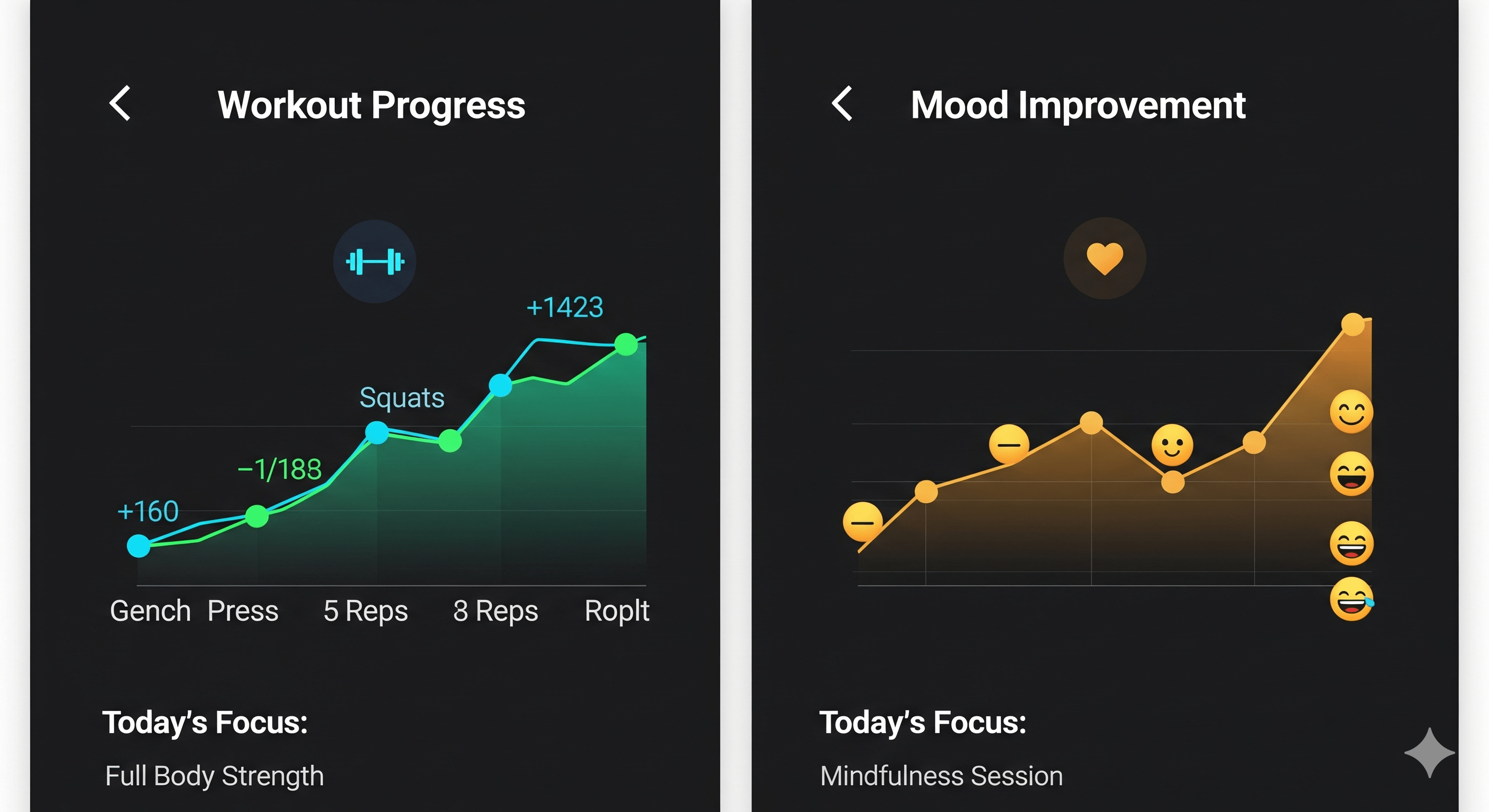Trading Stress for Strength: How Does Exercise Improve Mental Health
In today’s fast-paced world, stress, anxiety, and mental health challenges have become part of everyday life for millions of people. Long work hours, financial pressures, and constant digital distractions often leave us feeling overwhelmed and drained. While many turn to therapy or medication for relief (both of which can be very effective), there’s another powerful and natural tool that often gets overlooked: exercise.
Exercise isn’t just about building muscle or losing weight—it’s also about building mental resilience. Scientific studies consistently show that physical activity can improve mood, reduce stress, and even help with long-term mental health conditions like depression and anxiety.
In this post, we’ll explore how trading stress for strength through exercise can transform your mental health, supported by science and practical tips you can apply to your life.
Why Exercise Impacts Mental Health

When you move your body, powerful changes happen inside your brain and nervous system. Here’s why exercise is so effective for mental wellness:
- Endorphin Release – Exercise stimulates the release of endorphins (the “feel-good” hormones), which naturally reduce pain and boost happiness.
- Stress Hormone Regulation – Physical activity lowers cortisol (the stress hormone), helping your body recover from daily pressures.
- Improved Sleep – Exercise promotes deeper, better-quality sleep, which is essential for emotional balance.
- Boost in Confidence – Achieving fitness goals, no matter how small, can build self-esteem and reduce negative thoughts.
- Brain Health Benefits – Exercise increases blood flow to the brain, supporting memory, focus, and long-term mental clarity.
The Link Between Stress and Exercise
When stress builds up, your body goes into “fight-or-flight” mode. This means adrenaline spikes, your heart races, and your muscles tense. If this continues daily, it can lead to chronic stress and even mental health disorders.
Exercise acts as a natural reset button. It helps the body release built-up tension, regulate hormones, and shift your nervous system back to a calmer state. In fact, research shows that people who exercise regularly are less likely to develop anxiety and depression compared to those who are sedentary.
Types of Exercise That Help Mental Health
Not all workouts affect your mood in the same way. The best type of exercise for mental health is the one you enjoy and can stick with. Here are some effective options:
1. Cardio Workouts
Running, cycling, swimming, or brisk walking improves heart health and reduces stress hormones. Even a 20-minute daily walk can lift your mood.
2. Strength Training
Lifting weights or doing bodyweight exercises builds not just physical strength but also mental resilience and confidence.

3. Yoga and Mindful Movement
Yoga, tai chi, or Pilates combine physical movement with breathwork, directly reducing anxiety and promoting mindfulness.
4. Team Sports
Basketball, football, or group classes add a social connection factor, which is vital for mental well-being.
5. Outdoor Activities
Hiking, running on trails, or outdoor cycling not only reduce stress but also provide exposure to nature, which itself is a powerful mood booster
How Much Exercise Do You Need for Mental Health?
The good news is that you don’t need to train like an athlete to feel the mental health benefits. Experts recommend:
- 150 minutes of moderate exercise per week (like brisk walking) OR
- 75 minutes of vigorous exercise per week (like running or cycling).
Breaking it down, that’s just 30 minutes a day, 5 days a week—a very achievable goal for most people.
How Fitness Conferences Help You Build a Stronger Network in 2025
Real-Life Benefits: Stories of Transformation
Many people have found life-changing benefits through exercise. For example:
- Anna, a 32-year-old teacher, struggled with work-related anxiety. After starting a daily 20-minute walk, she noticed her stress levels dropped, and her sleep improved dramatically.
- James, a corporate professional, began weightlifting three times a week. Within months, he reported feeling stronger physically and more confident mentally, which helped him manage workplace pressure.
- Lina, a university student, used yoga to help with exam stress. Over time, yoga became her anchor for mental balance.
These stories highlight that exercise doesn’t just shape the body—it shapes the mind.
Practical Tips to Stay Consistent

- Start Small – Even 10 minutes a day can make a difference.
- Find Something Fun – Don’t force yourself to do workouts you hate. Dance, hike, or swim if that feels better.
- Mix It Up – Combine cardio, strength, and relaxation-based exercises for variety.
- Track Progress – Use a fitness app or journal to record how exercise impacts your mood.
- Get Social – Invite a friend to join. Accountability makes it easier to stick to the habit.
The Science Behind It
Scientific studies back up the mental health benefits of exercise:
- Harvard Medical School reports that just 15 minutes of running daily can reduce depression risk by 26%.
- The Anxiety and Depression Association of America (ADAA) highlights that exercise is a proven stress reliever, improving focus and reducing fatigue.
- The Mayo Clinic confirms that regular exercise boosts endorphins, reduces negative thinking patterns, and promotes calmness.
👉 External Resource: Harvard Health: Exercise and Depression
Final Thoughts
When life feels overwhelming, exercise can be your natural therapy. By trading stress for strength, you’re not just working on your physical fitness—you’re building a stronger, calmer, and more resilient mind.
You don’t need expensive equipment or hours at the gym. Start small, stay consistent, and notice how your mental health improves step by step.
In a world full of stress, movement is medicine—and strength is the best antidote.
FAQs on Exercise and Mental Health
1. Can exercise replace therapy or medication for mental health?
Not always. While exercise is powerful, it’s not a replacement for professional medical advice. It works best as a complementary approach.
2. How long does it take to see mental health benefits from exercise?
Some people feel better right after their first session, while long-term benefits often appear within 4–6 weeks of consistency.
3. What’s the best time to exercise for stress relief?
Anytime that fits your schedule. However, many people find morning workouts set a positive tone for the day.
4. Do I need a gym membership to get the benefits?
No. Walking, running, yoga at home, or bodyweight exercises are all effective.
5. Can too much exercise harm mental health?
Yes. Overtraining can lead to burnout, fatigue, and even worsen stress. Balance is key.
